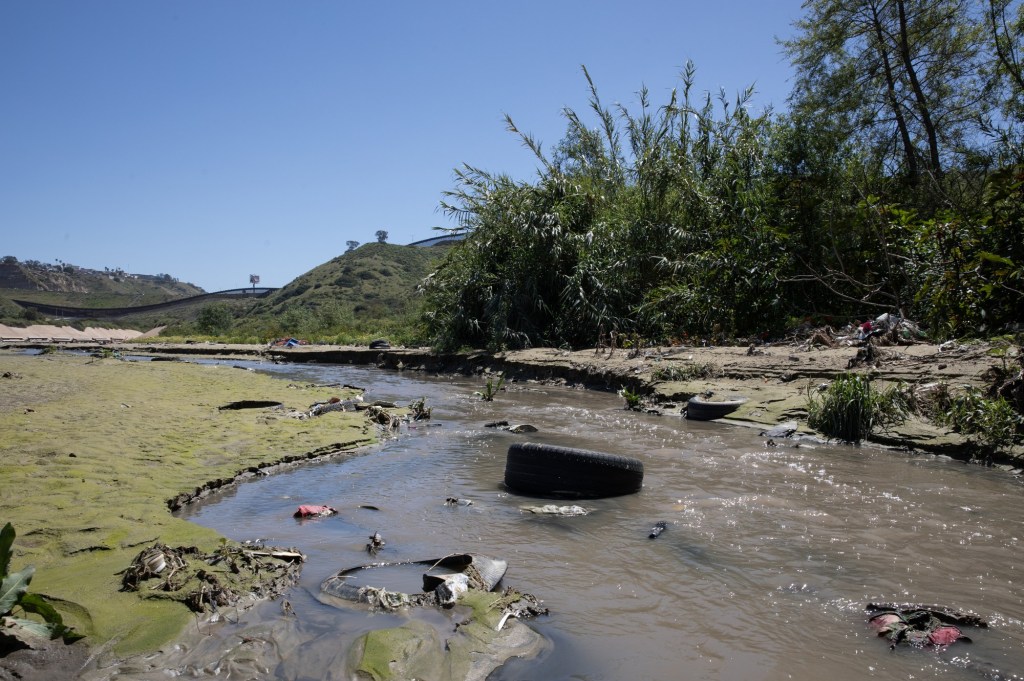A federal environmental public health agency said it will investigate potential harm caused by exposure to hydrogen sulfide in the air near the sewage-burning Tijuana River and issue recommendations to protect the public if necessary.
After an initial review of available data for chemical contaminants in air, the Agency for Toxic Substances and Disease Registry (ATSDR) determined that a public health assessment was necessary.
The decision contrasts with the Environmental Protection Agency’s announcement last week that it would not proceed with a petition from local elected officials for a potential Superfund designation because data reviewed 6-7 years ago did not meet hazard thresholds. . And it refuses to collect new data, saying it would be too expensive and other efforts to improve wastewater treatment infrastructure are underway.
ATSDR falls within the federal Department of Health and Human Services and is administratively overseen by the Centers for Disease Control and Prevention.
Mandy Cohen, CDC director and ATSDR administrator, confirmed the agency will take up the effort in a Jan. 7 letter to Sen. Alex Padilla and San Diego’s congressional delegation. They urged federal public health officials in May to examine the effects of untreated wastewater spilling over the border from Mexico into the United States and affecting nearby communities such as Imperial Beach, Coronado and San Diego.
“CDC’s commitment to investigate the health effects of hydrogen sulfide is an important step in addressing the public health and environmental crisis that has long plagued the Tijuana River Valley region,” Padilla said in a statement. “I am pleased that the CDC is taking my concerns seriously, and I look forward to seeing their critical findings and recommendations in the report we requested.”
Cohen said the agency will later determine if the surface water, sediment and biota data are “sufficient for public health assessment activities.”
He added that the agency could find critical data gaps “that prevent us from making public health determinations for each pathway.” If so, ATSDR will “recommend additional sampling and provide technical assistance as necessary to fill data gaps.”
The agency’s findings will be issued in a written report released to the public. If confirmed, the report will also include recommendations, Cohen said.
He did not specify when the investigation would begin and how long it would take.
It is unclear what specific wind data ATSDR reviewed. The agency did not respond to requests for comment.
Some of the available air data includes the San Diego County Air Pollution Control District, which last year installed air monitoring equipment in areas such as Imperial Beach, Nestor and San Ysidro. The district also did not respond to a request for comment on whether their data had been reviewed by the federal agency.
Since they came online, air monitors have repeatedly detected levels of hydrogen sulfide — one of the main chemical components of sewer gas — above the state threshold of 30 parts per billion on average within an hour.
Thresholds are primarily based on nuisance as opposed to serious health effects. According to the California Air Resources Board, “If the standard were based on adverse health effects, it would be set at a much higher level.”
However, the state and air pollution police acknowledge that even at those concentrations, some people, especially sensitive groups such as children, older adults or those with respiratory problems, may be affected.
More than 2,300 complaints were filed last year about toxic odors in the air district by people living in South County. Many of them also reported symptoms like nausea, headache, vomiting, dizziness and respiratory complications.
While the sewage crisis has long focused on untreated wastewater from Tijuana clogging up southern county coastlines, hydrogen sulfide gained significant attention last September. Local university researchers, who are studying the health and environmental effects of transboundary pollution, have identified areas near the Tijuana River where levels of the toxic gas are “relatively high.”
The county then sent its hazardous incident response team to investigate, which found elevated levels of hydrogen sulfide but not at concentrations that suggested imminent danger or a threat to public health, officials said.
A few months later, the Air Pollution Control District launched an online dashboard to track hydrogen sulfide levels and an index to advise the public on what to do.
ATSDR’s investigation follows a survey the agency and CDC conducted last year to better assess how the sewage crisis has affected the public. Results are expected to be released soon.
